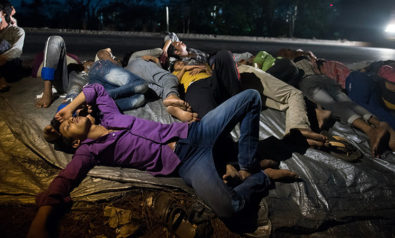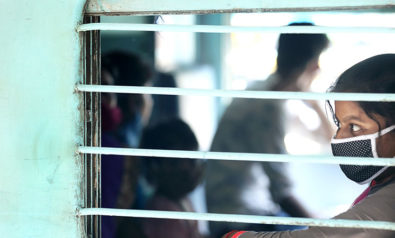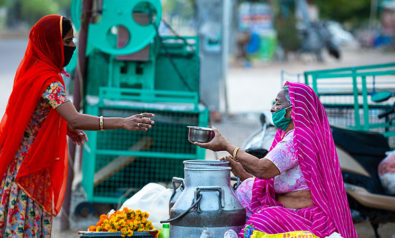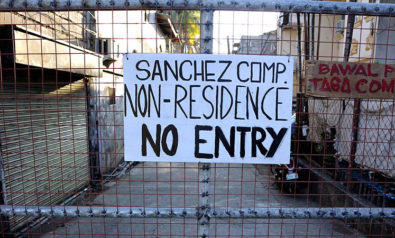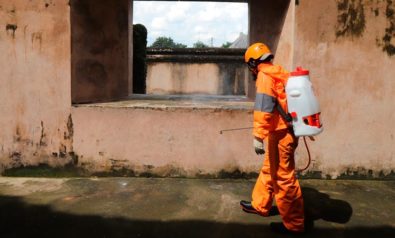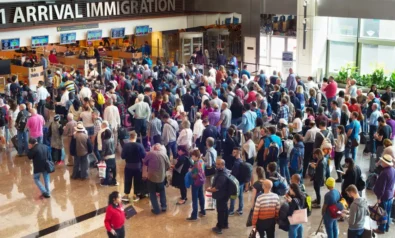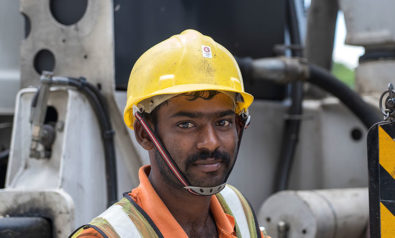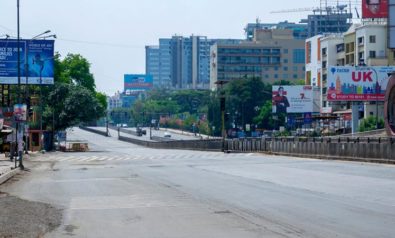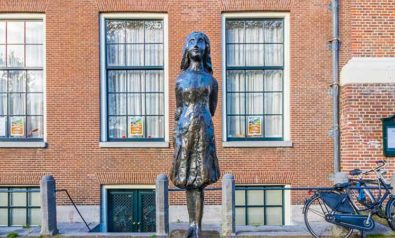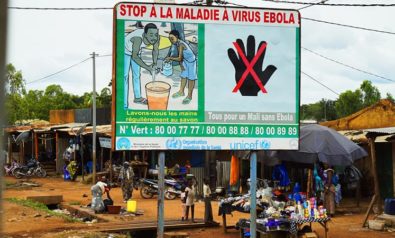In India, as the national lockdown was extended till May 3, it is incredible that the government failed to do what it should have done a month ago.
Heart-rending images of stranded people in cities all over the country, desperately trying to make sense of the sudden loss of home, hearth and livelihood, are everywhere. Thanks to the coronavirus lockdown, they cannot get to where they might experience some semblance of normality, the villages, the streets they grew up in, the communities they belong to and their loved ones who still live there. On April 29, the government finally said that millions of people can return home, yet the question of how remains.
Rohingya Refugee Camps Are the Next Frontline in COVID-19 Fight
The novel coronavirus has brought a dreaded disease into our midst. But it has also done something else. It has made impossible the traditional means of succor human beings are used to in such circumstances. A hug, a hand upon the shoulder, gestures offering comfort, words giving guidance and an affectionate sharing of food are things human beings have valued for millennia, especially when they wrestle with adversity. COVID-19, the disease the coronavirus causes, has made us afraid of human contact and even human interaction.
Transporting Poor Workers Is Desirable and Possible
For rural workers, cities are often hostile places. They live in cramped quarters, make meager incomes and strive to send money back to their loved ones in the villages they left behind. During this pandemic, they are stuck in suspicious and inhospitable surroundings. At this time, their deprivations are far worse in urban settings than they would be in their ancestral village homes. People in their villages may also have turned suspicious of and inhospitable to those who left a while ago, but they are still their own kith and kin. It is where these workers belong and where they should be during this time of distress.
This is a time when everyone should be in their homes, not stuck far away from it and pining to return. For a country with the resources we have, organizing such a return should not be difficult. Large fleets of state transport buses lie unused in thousands of bus yards across India. When transporting thousands of workers, bus drivers would be at risk, but the government could provide suitable protective equipment without much difficulty to a relatively tiny number of drivers.
With suitable cooperation between India‘s different states, transporting urban workers to their native villages should not prove too difficult. After all, the government has much experience in making arrangements for massive pilgrimages from across the country. With fuel prices in a free fall, this exercise should not prove terribly expensive either.
While transporting people back to their villages, the government must not underestimate the mistrust and wariness of villagers toward their arriving sons and daughters. We have seen images of posters outside villages asking those arriving to stay away. We have heard reports of returnees not being allowed transit through villages. However, this is precisely the prejudice that effective leadership must dispel. This is exactly what politics ought to be about.
The political class, and especially the prime minister, to whose calls the nation has so widely and frequently responded, must encourage communities to take back their returning sons and daughters. Of course, these communities must exercise suitable precautions and care in the process, but they must not turn their very own away.
A Homecoming May Be a New Beginning
In a village where people know each other, protocols of care are far easier to enforce than in a city, where a lack of community, dearth of affection and draconian authorities wreak havoc in a crisis. In India’s villages, everyone is a brother, a sister, a cousin, a nephew, a son or a daughter. Surrounded by them, it is far easier to accept limits on one’s behavior for the common good than in the anonymity of a city. Furthermore, villagers know how to look after their own. The resources required to establish the temporary quarantines and to care for the infected are unlikely to overwhelm rural communities.
Of course, these communities will need support and the government must provide it. The government is already spending large sums to respond to the coronavirus pandemic. The operative question is simple: Does it go for a centralized response focusing largely on larger population centers and driven by a limited number of possibly fallible experts, or does it adopt a more distributed strategy with a greater reliance on the wisdom of smaller communities?
It is the normal reaction of a government to centralize rehabilitation responses to a disaster. In times of natural calamities like floods and earthquakes, when entire communities are wiped out and rendered incapable of caring for themselves, it makes sense for a central authority to take charge. That works well for a short-term effort, concentrated geographically in a small area, with well-known sets of responses, honed over several similar experiences.
The coronavirus challenge is nothing like a flood or an earthquake. It has affected large parts of the world simultaneously, it is likely to persist over a long period, and effective response protocols are essentially unknown at the moment because we know so little about the virus. At such a time, it makes sense to trust in India’s widely distributed wisdom to respond effectively, while ensuring plentiful communication of the developing understanding about the disease.
The social and emotional connections that the people returning will experience in their villages are nowhere to be found in the desperate spaces they now inhabit. The skills they have learned in cities may or may not be of immediate relevance in villages, but they will certainly bring fresh sets of heads and hands to the challenge and the opportunity of village life.
Because the coronavirus pandemic is not a short-term challenge, it presents a unique opportunity to foster a new approach to village economies. For long, villages have been unable to resist the siren call of the cities’ economies. Now that these economies have collapsed and the perils of urban overcrowding have registered rudely on the national consciousness, it is possible for rural economies to reimagine themselves.
Multiple Lockdowns
By now, we know that this lockdown is not the last. We know that whether we extend this one or relax it in phases, or bring it back later, the number of infections will rise and ebb, bringing the need for fresh lockdowns from time to time. The pandemic is a challenge that will last at least 12 to 18 months and possibly longer. Our responses must not be those that are not feasible over this period.
Getting people to their villages, integrating them safely with the people already there and supporting their efforts to build a viable, alternative economic infrastructure that works over time is critical. If we keep rural workers confined in cities in the hope that they can rejoin the industrial/service urban economy quickly when this is over, we display a misunderstanding of when this will actually be over.
None of this will make sense to those who believe that coronavirus will go away in a couple of months and we can safely return to the old order. Yet this virus has shown us how fragile and vulnerable the entire structure of that old order is. We ignored warnings of such an outbreak for over a decade because we did not understand and were unmindful of that vulnerability. Now, that vulnerability can no longer be ignored and the current crisis presents a great opportunity to save ourselves from a similar future.
To put it simply, the homecoming of rural workers to their native villages is well worth our blood, sweat and tears.
The views expressed in this article are the author’s own and do not necessarily reflect Fair Observer’s editorial policy.
Support Fair Observer
We rely on your support for our independence, diversity and quality.
For more than 10 years, Fair Observer has been free, fair and independent. No billionaire owns us, no advertisers control us. We are a reader-supported nonprofit. Unlike many other publications, we keep our content free for readers regardless of where they live or whether they can afford to pay. We have no paywalls and no ads.
In the post-truth era of fake news, echo chambers and filter bubbles, we publish a plurality of perspectives from around the world. Anyone can publish with us, but everyone goes through a rigorous editorial process. So, you get fact-checked, well-reasoned content instead of noise.
We publish 2,500+ voices from 90+ countries. We also conduct education and training programs
on subjects ranging from digital media and journalism to writing and critical thinking. This
doesn’t come cheap. Servers, editors, trainers and web developers cost
money.
Please consider supporting us on a regular basis as a recurring donor or a
sustaining member.
Will you support FO’s journalism?
We rely on your support for our independence, diversity and quality.



